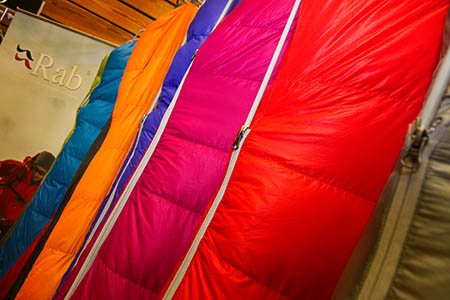Sleeping bags using down for their insulation are unbeatable for their lightweight warmth, but their Achilles heel has always been the sharp dip in performance if they get wet.
Damp or wet down clumps together and quickly loses its insulating efficiency – which in the UK’s notoriously rainy climate can be a big problem.
Derbyshire brand Rab has announced that, from next year, all its down sleeping bags will have hydrophobic treatment to repel water and improve performance in damp conditions.
The company has already introduced the treatment to its insulated clothing range.
Rab said its fillings will also comply with the European Down and Feather Association codex on traceability. “This code of conduct determines the source of down, ensuring that the down is a by-product of a slaughterhouse or harvested during moulting periods and is not illegally live-plucked.
“Working with suppliers and sub-suppliers IDFL – IDFL the global leader in down testing, founded in 1978, and the largest down and feather laboratory in the world – aims to trace the materials along the supply chain all the way back to the farm.
“In October 2010 the European Down and Feather Association adopted a codex or code of conduct and a traceability standard that EDFA members are required to follow.
“IDFL can audit supply chains to verify compliance to these standards.
“This significant step goes a long way towards full traceability of the supply line to ensure that we use only the finest quality and most ethically sourced down.”
Rab had its down sleeping bag range on show at the Kendal Outdoor Retails Show, ranging from its top, £800 models aimed at mountaineers heading for 8,000m peaks and providing comfort as low as – 41C, down to trekking models in the £350 range.
The company’s down products will have Nikwax treatment.
Rab chief executive Matt Gowar said: “The Nikwax technology will ensure all the down in our garments and sleeping bags will not only be as environmentally safe as possible, but waterproof too.
“We have been working with Nikwax over several months to optimise the process, to produce a great product.”
